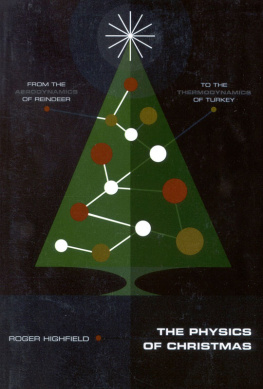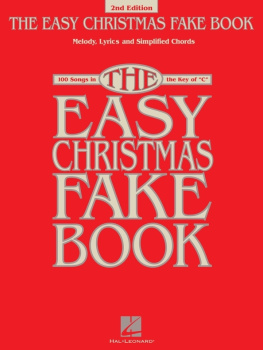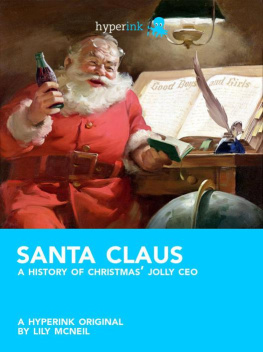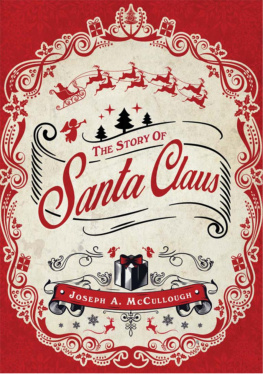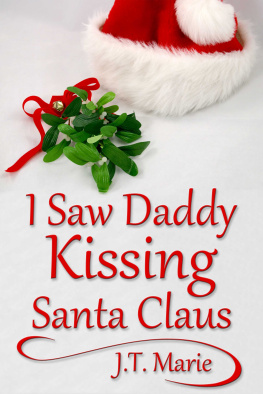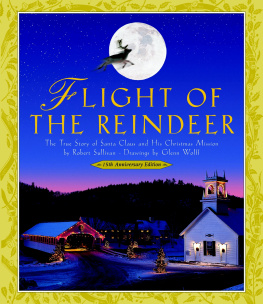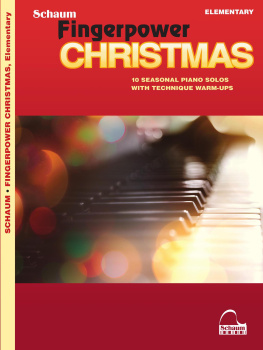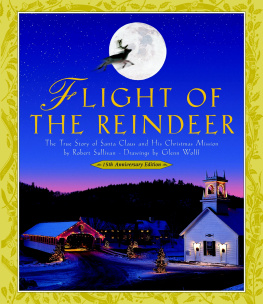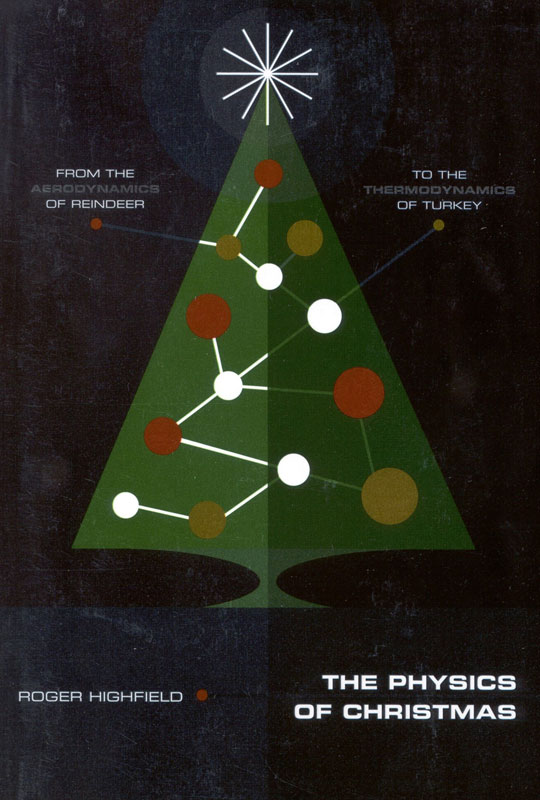Copyright 1998 by Roger Highfield
All rights reserved. No part of this book may be reproduced in any form or by any electronic or mechanical means, including information storage and retrieval systems, without permission in writing from the publisher, except by a reviewer who may quote brief passages in a review.
Originally published in hardcover by Little, Brown and Company, 1998
Little, Brown and Company
Hachette Book Group
237 Park Avenue
New York, NY 10017
Visit our Web site at www.HachetteBookGroup.com
The Little, Brown and Company name and logo is a trademark of Hachette Book Group, Inc.
The author is grateful for permission to include the following previously copyrighted material: Talking Turkeys, copyright Benjamin Zephaniah, 1994. Taken from the book Talking Turkeys, published by Penguin Books.
ISBN: 978-0-316-05451-5
Delight in the physics of
Snow A single snowflake might contain on the order of 100,000,000,000,000,000,000 water molecules. The snowflakes that adorn Christmas cards are somewhat idealized. Most snowflakes are ugly sisters: only 1 percent are symmetrical.
Christmas spirits The body treats the alcohol from your Christmas tipple like a poison and attempts to break it down in the liver. This organ can deal with large amounts of the substance, but it requires time to do so. Drink a liter of spirits in one go, and you may well die. Pace yourself, and your liver efficiency will contribute to your tolerance for seasonal celebrations.
Shopping Although the lines of people in a supermarket are all subject to random delays, on average they tend to move at about the same rate. This feature of the Christmas shopping experience is captured in a mathematical form by the so-called Poisson process, which assumes that people are as likely to arrive at one time as at any other, but that precisely when they arrive is entirely random.
Holiday decorations What is so beautiful about the act of lighting a candle on a Christmas tree is that it honors the cycles that turn within and without living things. The chemical energy generated by photosynthesis in plants is passed up the food chain, for instance, to grazing cattle and then on to a tallow candle. When the candle is lit at the gloomiest time of year, it releases this cryptic sunlight and returns the complex fat, or wax, molecules to the form in which the plants found them water and a hot breath of carbon dioxide that can again be incorporated into living things.
Is The Physics of Christmas the perfect Christmas present? Pretty nearly. There is a risk that it won't reach the intended recipient if you open it yourself.
New Scientist
Also by Roger Highfield
FRONTIERS OF COMPLEXITY,with Peter Coveney
THE PRIVATE LIVES OFALBERT EINSTEIN,with Paul Carter
THE ARROW OF TIME,with Peter Coveney
IN MEMORY OF MY FATHER
I have endeavoured in this Ghostly little book, to raise the Ghost of an Idea, which shall not put my readers out of humour with themselves, with each other, with the season, or with me. May it haunt their house pleasantly, and no one wish to lay it.
Their faithful friend and servant,
C.D.
December 1843
L IKE CHARLES DICKENS IN HIS PREFACE TOA Christmas Carol, I propose to raise the Ghost of an Idea.
In Dickens's classic book, the Ghosts of Christmas Past, Present, and Future reveal the true meaning and spirit of the season to Ebenezer Scrooge, transforming him from a miser into a potent symbol of charity. I, too, hope to enlighten the reader by acting as a guiding spirit, one who will illuminate Christmas by viewing the holiday and its rituals from a new perspective, that of science. Christmas and associated celebrations offer a wonderful excuse to explore a broad range of fields, from biotechnology and fractals to neuropharmacology and nanotechnology. If appetites are whetted for science, or at the very least curiosity about the subject is stimulated, I will be pleased. Any change in the charitable behavior of the reader would, of course, be a welcome bonus.
Each Christmas for the past decade, I have written about seasonal science for The Daily Telegraph. Many thanks to my editor, Charles Moore, and his predecessor, Max Hastings, for indulging my obsession. Gulshan Chunara, as ever, provided me with invaluable assistance. It has also been stimulating discussing aspects of the book with my colleagues Adrian Berry, Aisling Irwin, David Johnson, Laura Spinney, Tom Standage, and Robert Uhlig. Sarah Foot provided me with a wonderful retreat on Islay where I could work on the U. S. edition.
John Brockman and Katinka Matson gave me the encouragement to develop a book proposal. Very many thanks are also due to Little, Brown and Rowohlt for backing the project and in particular to Rick Kot for his warm encouragement and support.
I would like to thank the following people and organizations for helping me to seek out the science behind the festivities: Leonard Adleman, Denis Alexander, Anthony Astbury, Peter Barham, Linda Bartoshuk, Sam Berry, Gerard Bond, Roy Bradshaw, British Antarctic Survey, Donald Brownlee, L. P. Bucklin, Stephen Burley, David Cheal, David Clary, Chris Clayton, Cary Cooper, Malcolm Cooper, Winnifred Cutler, Daniel Dietrich, Piero Dolara, Jonathan Dorfman, Robert East, Matthew Freeman, Jeffrey Friedman, Adrian Furnham, Takanari Gotoda, Richard Gross, Steven Guest, Sunil Gupta, Odd Halvorsen, Patrick Harding, Alan Hirsch, James Home, David Hughes, Ilpo Huhtaniemi, Colin Humphreys, Nina James, Charles Jenkins of IBM, Steve Jones, Dan Keathley, David Kelly, Barry Kemp, Harold Koenig, Sir Harry Kroto, Michel Laroche, Dale Lewison, Robin Lovell-Badge, Laurie Lucchina, George Masterton, Dale Matthews, John Maynard Smith, Patrick McGovern, Wendy Mechaber, Dave Mela, John Metz, Michael Molnar, John Moore, Les Noble, Adrian North, Jos Pardo, Kenneth Pargament, David Peel, Raj Persaud, David Phillips, Krishna Podila, Bill Proebsting, Sir Martin Rees, Wolf Reik, Allen Riordan, Norman Rosenthal, Delwen Samuel, Nigel Scott, Larry Silverberg, David Skuse, Kristina Staley, Ian Stewart, Andrew Strassman, Joergen Taageholt, Fred Turek, Luca Turin, Mark Uncles, UNICEF, Alan Watkins, Diederik Wiersma, George Williams, and Ian Wilmut.
Ronald Parkinson of the Victoria and Albert Museum in London was kind enough to spend a morning with me discussing the museum's vast collection of Christmas cards. Linda Capper also proved a great help when it came to contacting members of the British Antarctic Survey.
A number of people have also read parts or all of the manuscript to ensure that the science is understandable. Many thanks to my wonderful wife, Julia; my parents, Ron and Doris; and a number of friends: Samira Ahmed, Peter Coveney, Tony Manzi, Eamonn Matthews, Brian Millar, Sharon Richmond, and Martin Winn. I'd like to thank the Reverend Dr. John Platt of Pembroke College, Oxford, for looking over the chapter on the Star of Bethlehem.
Particular thanks to Graham Farmelo of the Science Museum for his many and constructive suggestions on an early draft, to Robert Matthews for his calculating skills and his Murphy's Law expertise, and to my mother for translating German-language papers and Christmas books.
I am also indebted to a number of researchers who gave me feedback on specific sections of the book. I have covered such a wide range of fields that I am confident of one thing: a number of howlers remain, all of which are my responsibility. Many thanks to the following for helping me weed out some of the worst: Miguel Alcubierre, Peter Atkins, Peter Barham, Charles Bennett, Sam Berry, David Bonthron, Roy Bradshaw, Samuel Braunstein, Roger Buckland, Carole Burgoyne, Linda Capper, Isaac Chuang, David Clary, Roger Cone, Cary Cooper, Peter Coveney, Glenn Cox, Peter Davies, Leslie Dawes, Daniel Dietrich, Robert East, Sabine Eber, Ron Evans, Matthew Freeman, Adrian Furnham, David Gems, Alexei Glebov, Richard Gross, Rose Gubitosi-Klug, Sunil Gupta, Laurance Hall, Odd Halvorsen, Patrick Harding, Mike Hayden, James Home, David Hughes, Ilpo Huhtaniemi, Colin Humphreys, Dan Keathley, David Kelly, Gerd Kempermann, Harold Koenig, Tom Lachlan-Cope, Michel Laroche, Dale Lewison, Robin Lovell-Badge, Neil Martin, Patrick McElduff, Stanley McKnight, Dave Mela, Randolf Menzel, Daniel Miller, Les Noble, Adrian North, Jos Pardo, Daniele Piomelli, Caroline Pond, David Price-Williams, Wolf Reik, Allen Riordan, Margaret Robins, Delwen Samuel, Larry Silverberg, Gene Stanley, Ian Stewart, Scott Swartzwelder, Luca Turin, Mark Uncles, Dietmar Voelkle, Bernard Wentworth, Diederik Wiersma, Andy Yeatman, Anton Zeilinger, and Timothy Zwier.

